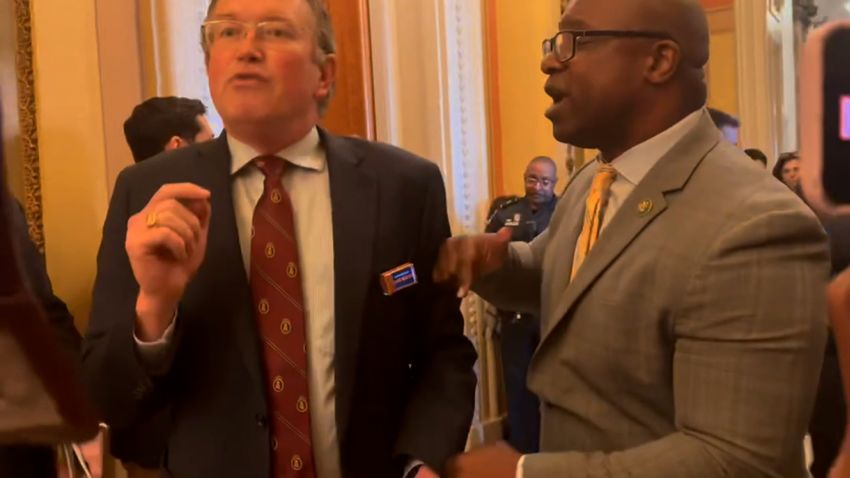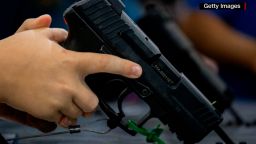Editor’s Note: Julian Zelizer, a CNN political analyst, is a professor of history and public affairs at Princeton University. He is the author and editor of 25 books, including the New York Times best-seller, “Myth America: Historians Take on the Biggest Lies and Legends About Our Past” (Basic Books). Follow him on Twitter @julianzelizer. The views expressed in this commentary are his own. View more opinion on CNN.
Given the widespread availability of guns in this country and the hundreds of mass shootings that take place each year, many Americans are either haunted by the trauma of gun violence or fearful of the possibility that they or their loved ones could be the next victims.

But the issue of gun control seems impossible to tackle due to the stark reality of partisanship in Washington.
After the federal assault weapons ban expired in 2004, the gun industry seized on massive commercial opportunities to expand the sales of AR-15-style assault weapons. The number of deaths attributed to mass shootings has also significantly increased since the ban expired.
Despite this, many Republican lawmakers have refused to adopt common sense measures that would curb the ability of citizens to purchase some of these weapons, bending instead to the gun lobby and segments of the electorate who consider these weapons sacrosanct.
In fact, some Republicans are trying to make it easier to purchase guns. Just days after six people, including three children, were killed in an elementary school shooting in Nashville, Tennessee, state legislators in North Carolina overrode the governor’s veto and made it legal to purchase a pistol without a permit.
Meanwhile, Florida Gov. Ron DeSantis, a likely 2024 Republican presidential candidate, visited a popular gun store in Cobb County, Georgia, on Thursday as part of his book tour.
Despite these tone-deaf and counterproductive moves, Americans can’t afford to be consumed by total despair and hopelessness when it comes to this issue.
We must reject the notion that passing legislation is impossible. It is not.
History shows that lawmakers have been capable of taking significant steps to strengthen the regulation of guns and pass gun control legislation at the federal and state levels.
In 1927, the Mailing of Firearms Act, also known as the Miller Act, prohibited Americans from sending concealed weapons through the US Postal Service. Rep. John F. Miller, a Republican from Washington, took action and an effective grass roots campaign garnered widespread support. While the law was limited in its scope — people could still legally send firearms through private mail carriers — it marked a breakthrough in federal legislative efforts.
The National Firearms Act was passed in 1934, after Prohibition-era criminals adopted the use of the “Tommy Gun,” one of the first portable and fully automatic firearms. The law imposed regulations and heavy taxes on certain firearms, including machines guns and sawed-off shotguns. The government also established a national registry to keep a record of sales.
Four years later, Congress enacted the Federal Firearms Act of 1938. Interstate gun dealers were made to obtain licenses and maintain customer records. The law also banned the sale of weapons to certain Americans, including those who were convicted of felonies. The president of the National Rifle Association (NRA) even supported the bill. “I have never believed in the general practice of carrying weapons,” Karl T. Fredrick testified before Congress. “I do not believe in the general promiscuous toting of guns. I think it should be sharply restricted and only under licenses.”
More modern regulations were instated after the assassinations of Martin Luther King Jr. and Robert F. Kennedy in 1968. The Gun Control Act of 1968 expanded the rules on selling and importing firearms, prohibited certain individuals, such as convicted felons, from having guns and set the minimum age required to purchase a handgun at 21. “The government can help protect its citizens against the random and the reckless violence of crime at gunpoint,” President Lyndon Johnson said upon signing the bill.
And let’s not forget, there have been modern Republican presidents who have agreed to more stringent federal controls as well. President Ronald Reagan — who survived an assassination attempt in 1981 — signed the Undetectable Firearms Act in 1988 that made it “unlawful to manufacture, import, sell, ship, deliver, possess, transfer, or receive any firearm” that could not be detected by a metal detector.
In 1990, President George H. W. Bush signed the Crime Control Act, which the Democrat-controlled Congress had passed to tightened restrictions on semi-automatic weapons. Three years later, President Bill Clinton signed into law the Brady Handgun Violence Prevention Act, named after Reagan’s Press Secretary James Brady who was seriously wounded in the assassination attempt. The law imposed a five-day waiting period for purchases of handguns and required federally licensed dealers to run background checks on those purchasing a firearm.
In 1994, Congress passed a federal ban on the manufacture, sale and possession of certain semi-automatic assault weapons. Former Presidents Ronald Reagan, Gerald Ford and Jimmy Carter all supported the bill. “This is a matter of vital importance to the public safety,” they wrote in a letter to members of the House. “While we recognize that assault weapon legislation will not stop all assault weapon crime, statistics prove that we can dry up the supply of these guns, making them less accessible to criminals.” The legislation, which passed in the wake of a series of horrendous shootings, was not perfect. There were loopholes, since the law did not ban all semiautomatic weapons and it had a sunset provision of 10 years.
The Republican-controlled Congress allowed the law to expire (and in 2005 passed a law that shielded the gun industry from liability lawsuits). Nonetheless, numerous studies have shown that the assault weapons ban was successful during the 10 years it was in effect.
There have been more federal legislation since then, including the Bipartisan Safer Communities Act in 2022 which provided more funding for crisis intervention programs, mental health programs, and security in schools and imposed a number of new background checks and sales bans.
A number of states have also taken the lead. California, New York, Illinois, Maryland and Colorado are just some of the states that put tougher measures in place in 2022.
But there’s plenty more work to be done. Many of the regulations that have been passed over the years were severely flawed. Some provisions have been dismantled, while other have been weakened as gun producers and buyers found ways around them.
The gun lobby and manufacturing industry still rule the roost despite having weakened in recent years. The Second Amendment continues to be used as a bludgeon against new gun regulations despite many legal experts arguing that the founding fathers never intended to allow unfettered access to guns. But the Republican Party has fully aligned itself with a broad interpretation of the Second Amendment and the partisan divide might be growing — the 2022 midterms were the first in 25 years where the NRA did not give any Democratic candidates a high ranking.
With the filibuster in the Senate, Democrats have been unable to move forward with key measures that experts agree would be needed to meaningfully tackle this crisis. This has forced presidents such as Barack Obama to resort to executive action instead.
In the end, breaking through the gridlock once again will require unyielding political pressure on elected officials. Members of Congress must continue to hear from the majority of Americans who do support stricter gun control. This must be an issue raised and highlighted every election cycle, and candidates should be forced to go on the record as to where they stand when it comes to the kind of weapons that are consistently used in mass shootings.
The Parkland students who survived the 2018 shooting at their Florida high school created a template for this sort of action. The student courted the youth vote, organized rallies and protests in districts across the country, and capitalized on media attention to keep the issue on the front-burner.
During the March on Washington in 1963, Martin Luther King Jr. famously spoke about the urgency of now. “We have also come to this hallowed spot to remind America of the fierce urgency of now,” he said while standing in front of the Lincoln Memorial. “This is not time to engage in the luxury of cooling off or to take the tranquilizing drug of gradualism. Now is the time to make real the promises of democracy.” While King was talking about racial justice, the message that he delivered rings just as true today with regards to guns.
With mass shootings still occurring at an alarming rate, the nation is increasingly traumatized by gun violence. Young children today are now subject to active shooter drills and live with the very real fear that a mass shooting could take place in their schools, with guns surpassing car accidents as the leading cause of death for US children and teens.
Despite this bleak reality, we must remember that federal and state legislative bodies can and have passed important gun control legislation. This history must be part of the national conversation.




